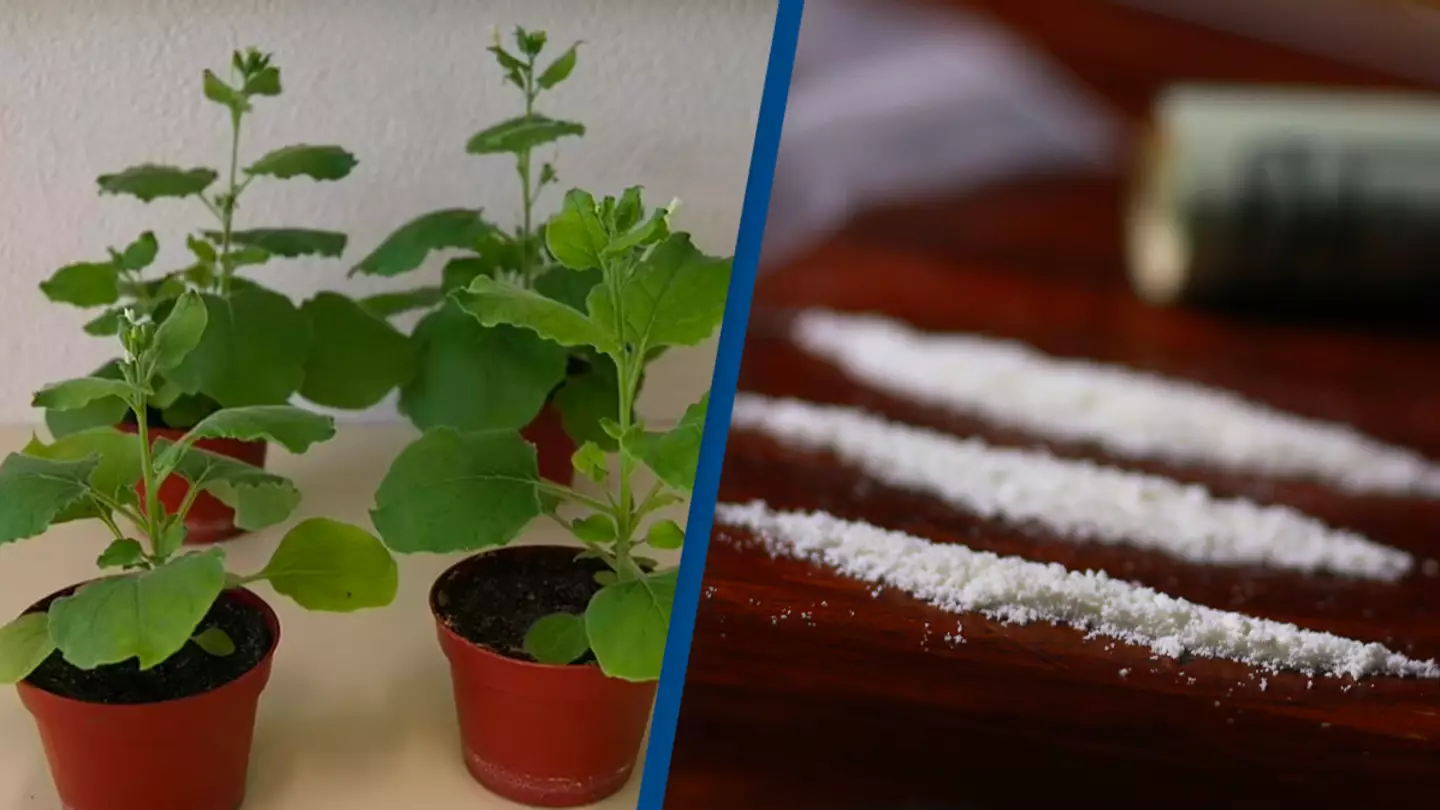
A new genetically modified tobacco plant is able to produce cocaine inside its leaves in a bizarre new breakthrough.
A new study reveals how scientists have managed to recreate the cocaine-producing biochemistry of the coca plant inside the leaves of a tobacco plant relative.
Cocaine is naturally produced in the leaves of the Erythroxylum coca plant, but a team of researchers at the Kunming Institute of Botany in China decided to see if they could recreate this process themselves – with incredible results.

Advert
Sheng-Xiong Huang and his colleagues recreated the unique biochemistry normally found in the coca plant in a tobacco plant relative called Nicotiana benthamiana.
Using genetic modification, they produced two enzymes that generate cocaine when the leaves are dried, known as EnMT4 and EnCYP81AN15.
This meant the tobacco plant could produce methylecgonone - a tropane alkaloid found in coca leaves - in its own leaves.
In the study, which was published in the Journal of the American Chemical Society and titled ‘Discovery and Engineering of the Cocaine Biosynthetic Pathway’, the authors wrote: “Cocaine, the archetypal tropane alkaloid from the plant genus Erythroxylum, has recently been used clinically as a topical anesthesia of the mucous membranes.

“Despite this, the key biosynthetic step of the requisite tropane skeleton (methylecgonone) from the identified intermediate 4-(1-methyl-2-pyrrolidinyl)-3-oxobutanoic acid (MPOA) has remained, until this point, unknown.
“Herein, we identify two missing enzymes (EnCYP81AN15 and EnMT4) necessary for the biosynthesis of the tropane skeleton in cocaine by transient expression of the candidate genes in Nicotiana benthamiana. Cytochrome P450 EnCYP81AN15 was observed to selectively mediate the oxidative cyclization of S-MPOA to yield the unstable intermediate ecgonone, which was then methylated to form optically active methylecgonone by methyltransferase EnMT4 in Erythroxylum novogranatense.”
They added that their work reports a ‘near-complete biosynthetic pathway of cocaine’, while also providing 'new insights into the metabolic networks of tropane alkaloids (cocaine and hyoscyamine) in plants’.
The team also said their study offers ‘significant implications’ for pharmaceutical production, with the New Scientist reporting how reproducing the entire biochemical pathway in another plant could help people manufacture the drug for scientific study.
Speaking to the scientific outlet, co-author Huang explained: “At present, the available production of cocaine in tobacco is not enough to meet the demand on a mass scale.”
Topics: Drugs, Science, World News